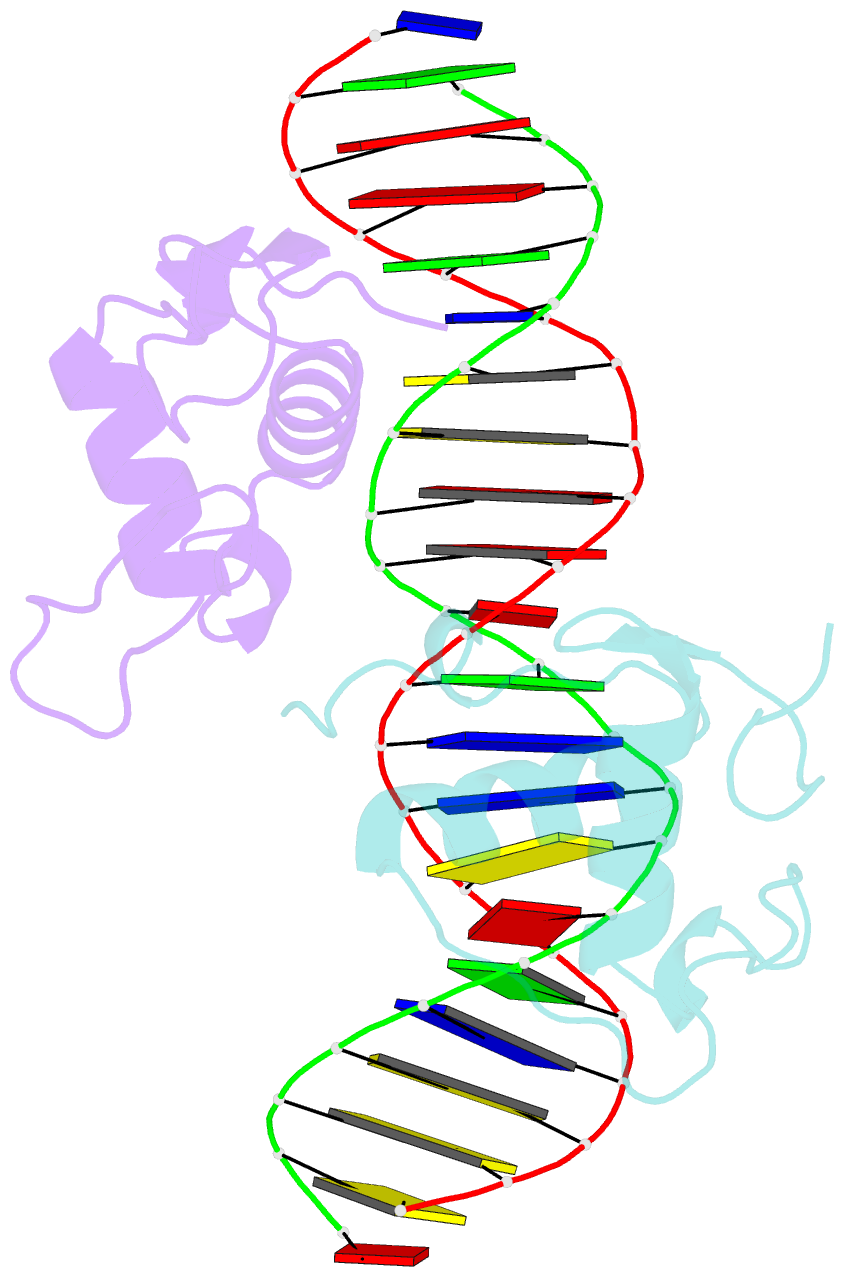Summary information and primary citation
- PDB-id
- 3cbb; SNAP-derived features in text and JSON formats;
DNAproDB
- Class
- transcription-DNA
- Method
- X-ray (2.0 Å)
- Summary
- Crystal structure of hepatocyte nuclear factor 4alpha in complex with DNA: diabetes gene product
- Reference
- Lu P, Rha GB, Melikishvili M, Wu G, Adkins BC, Fried MG, Chi YI (2008): "Structural basis of natural promoter recognition by a unique nuclear receptor, HNF4alpha. Diabetes gene product." J.Biol.Chem., 283, 33685-33697. doi: 10.1074/jbc.M806213200.
- Abstract
- HNF4alpha (hepatocyte nuclear factor 4alpha) plays an essential role in the development and function of vertebrate organs, including hepatocytes and pancreatic beta-cells by regulating expression of multiple genes involved in organ development, nutrient transport, and diverse metabolic pathways. As such, HNF4alpha is a culprit gene product for a monogenic and dominantly inherited form of diabetes, known as maturity onset diabetes of the young (MODY). As a unique member of the nuclear receptor superfamily, HNF4alpha recognizes target genes containing two hexanucleotide direct repeat DNA-response elements separated by one base pair (DR1) by exclusively forming a cooperative homodimer. We describe here the 2.0 angstroms crystal structure of human HNF4alpha DNA binding domain in complex with a high affinity promoter element of another MODY gene, HNF1alpha, which reveals the molecular basis of unique target gene selection/recognition, DNA binding cooperativity, and dysfunction caused by diabetes-causing mutations. The predicted effects of MODY mutations have been tested by a set of biochemical and functional studies, which show that, in contrast to other MODY gene products, the subtle disruption of HNF4alpha molecular function can cause significant effects in afflicted MODY patients.





